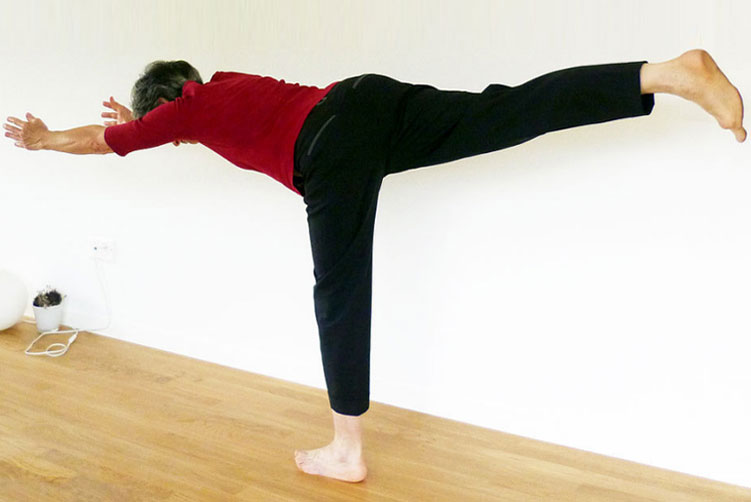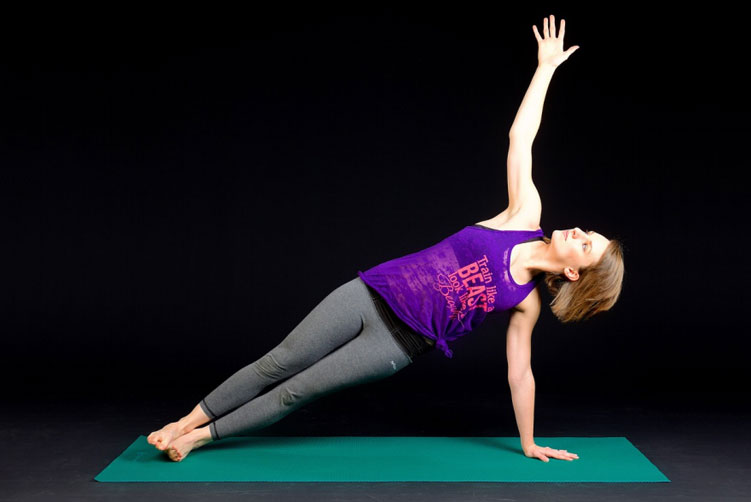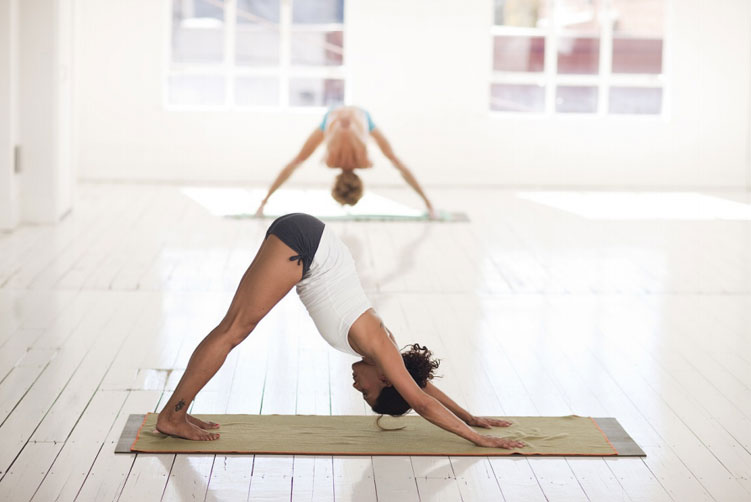Health Benefits of Yoga
The benefits of yoga extend far beyond the typical benefits of which people are aware of.
Perhaps the physical health component of yoga is secondary for you and you are looking more for the spiritual health benefits. Most women are not aware of the health benefits of yoga to increase fertility.
The health benefits of yoga are innumerable and so are the benefits of the mental, emotional and spiritual self. Yoga is ideal for anyone wishing to get health conscious as it addresses all areas of health, both physical and mental.
Many people are still unaware of all the great benefits of practicing yoga as a way to better their health.
Before you Start:
 The following yoga poses can be made every time, wherever you are, or as part of another weight lifting routine. Always warming up for just a few minutes time with a little bit of walking, marching or related activity until entire body and muscles get loose, relaxing and wram.
The following yoga poses can be made every time, wherever you are, or as part of another weight lifting routine. Always warming up for just a few minutes time with a little bit of walking, marching or related activity until entire body and muscles get loose, relaxing and wram.
Breathe deeply and fully while holding the poses, breathing from your lower belly and diaphragm rather than holding your breath in your chest. In yoga, a breath cycle is one inhale and one exhale.
Do the poses in a tranquil environment. Music, if used, should be tranquil and peaceful. Move to your own limits.
Basic Yoga Lessons for Women:
If a woman wants a healthy way of life devoid of any strain and stress, she should start her day with yoga.
First things first, when you roll out of your bed, sit on a mat on the floor and hug your knees to your chest. Then raise your legs in the air and stay bottoms up until your head clears. Next, stand up and drop your forehead to your shins until you feel ready to tackle the toothbrush and get on with your day.

Waking up doesn’t have to consist of pouring coffee down your gullet to shock yourself alive.
Many women pile up an array of small violences against themselves from the moment they wake up – caffeine, cigarettes, abrasive exercises or no exercise at all. Lots of faddish fitness programs today have this violent approach – do 50 leg raises or pound your body jogging on the pavement or jump around to a rhythm, not of your own making.
Your approach to fitness and well-being and to life, in general, should be nonviolent one – working smoothly with concentration and determination at your own pace without competing with anyone else. Don’t be ruthless with yourself and you won’t be ruthless with other people.
Your routine should ideally center on 28 postures drawn from the 5,000-year-old technique whose name comes from the Sanskrit for sun, moon and join together. The exercises should range from deep breathing to pretzel-like stretches.

Yoga is strenuous, but not painful, and it gives every inch of your body a terrific workout.
Yoga proves particularly helpful in strengthening a body plagued by injury.
Yoga helps you maintain flexibility, build strength and muscle definition and even. Try spending 60 to 90 minutes on your yoga routine, before breakfast, five to six days a week.
Follow the basics mentioned here to have a healthy and balanced life:
- Avoid the big seduction to only go with your strong points – like weight-lifting if you’ve got great muscles. It’s the thing that’s hardest for you that you need to work on the most
- Don’t space out during workouts. Use that time to have a private conversation with yourself: ‘How do I feel physically, mentally.’ ‘How is my balance and coordination today.’ ‘Is there something I should pay special attention to.’
- Practice yoga in the early morning or early evening at least one hour after a light meal or three to four hours after a main meal. If you are hungry before practice, try tea, milk or fruit juice.

Exercises:
WARRIOR III POSE:
Start in the Mountain Pose with the heels slightly apart, big toes touching, legs straight, chest lifted, pelvis in a neutral position. Placing hands on hips, step back with your right foot so just your right toes touch the floor, all of your body weight on your left foot.
Keep your right leg extended in a straight line as you start to lean forward from your hips. Balance the length of your body, from your right heel to your fingertips, over your left leg until your torso is parallel to the floor. Keep your weight evenly distributed through inner and outer heel, with hips level. Begin with 5 breath cycles and progress to 15.
Lift your torso up and return to the Mountain Pose; repeat on the other side.

PLANK POSE, SIDE-PLANK POSE
Begin on your hands and knees, hands directly under shoulders, knees under hips. Move feet back until the legs are straight and you’re balancing on your toes, feet together. Keep the shoulders pulled back and down, arms straight. This is the Plank Pose.

Squeezing the ankles together, roll onto the outer edge of the left foot, keeping feet stacked, legs straight. Lift the right hand toward ceiling then look up at it. Let your abs support your body without clamping and crunching. Then lower right hand to floor, rolling down toward the right, and return to the Plank Pose. Repeat on other side. Hold each pose for 5 breath cycles.

Hold that Pose:
So, how can yoga help reshape your waist?
In simple terms, by requiring you to move – and hold – your torso muscles as a unit. Rather than isolating your abdominal muscles as you do in crunches, yoga poses help to lengthen your overall torso, creating a feeling that is both centered and strong.

Think of your torso as a long vessel through which numerous muscles interact to keep you looking lean. Your transversus abdominis, the deepest abdominal muscle, works with the others to hold in your lower belly. Your erector spinae, the muscles that attach on your spine, straighten your posture and can make you feel (and appear) taller, while your rectus abdominis and obliques are the strong and flexible muscles that allow your limbs to move freely.
How to Gain a Shapely Waist through Yoga:
The size of the waist is an indication of overall fitness for many people. Most health experts agree that a smaller waist is healthier than a big one. The reasoning behind this is that increases in fat around the waist usually result in increased health risks such as diabetes, high cholesterol, and blood pressure.
In evolutionary and biological terms, a small waist signifies youth and vitality. But doing endless workouts of crunches alone will not allow you to achieve that Venus-like waist of your dreams. You will need to supplement specific waist-orientated exercises with ones from various disciplines.

Specifically, you will need to work the inner girdle of muscles – commonly known as the core muscles – with slow abdominal exercises that work very deep into these muscle groups.

While usually associated with building flexibility, some specific exercises from yoga-based workouts also target the underlying core muscles around the waist.





Leave a Reply